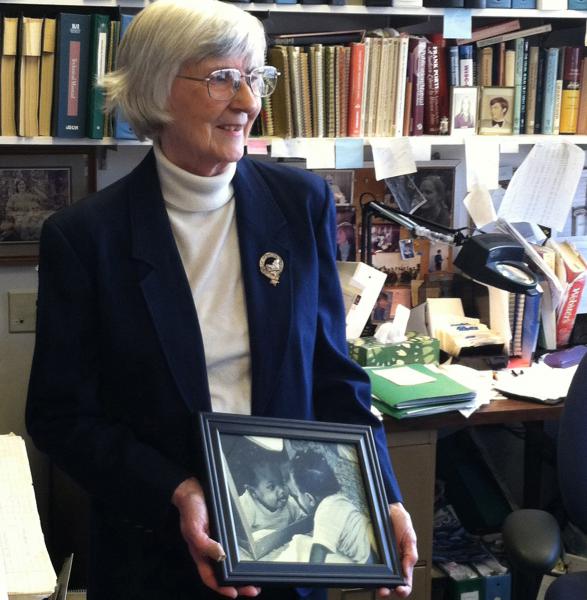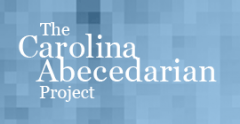 FPG researchers followed participating children well into adulthood, assessing them at age 5, 8, 12, 15, 21, and 30, as well as in their mid-30s for the latest study. Through age 15, I.Q. scores for the children who received the birth-to-age-5 Abecedarian intervention were higher than those of the randomly assigned control group. The Abecedarian children also scored higher on achievement tests in math and reading during their elementary and secondary school years. In addition, they had lower levels of grade retention and fewer placements in special education classes.
FPG researchers followed participating children well into adulthood, assessing them at age 5, 8, 12, 15, 21, and 30, as well as in their mid-30s for the latest study. Through age 15, I.Q. scores for the children who received the birth-to-age-5 Abecedarian intervention were higher than those of the randomly assigned control group. The Abecedarian children also scored higher on achievement tests in math and reading during their elementary and secondary school years. In addition, they had lower levels of grade retention and fewer placements in special education classes.
Frances Campbell (left), who has been with the project from the start, took over for Craig Ramey as principal investigator midway through the age 15 follow-up study and since then has served as principal investigator. At age 21, the treated group had maintained statistically significant advantages both in intellectual test performance and in scores on academic tests of reading and mathematics, and the treated group also had attained more years of education. In addition, recipients of the Abecedarian curriculum were more likely to attend a 4-year college or university, more likely either to be in school or to have a skilled job, or both. They also were less likely to be teen parents, less likely to smoke marijuana, and less likely to report depressive symptoms, when compared to individuals in the control group.
At age 30, the treated group was more likely to hold a bachelor’s degree, hold a job, and delay parenthood, among other positive differences from their peers. Age 35 brought blockbuster findings about health (more on this below).
The Abecedarian Project also brought unmistakable advantages for the teenage mothers with children in the study. By the time their children were 4½ years old, these mothers were more likely to have finished high school and undergone post-secondary training, more likely to be self-supporting, and less likely to have more children. Additional training, employment experience, and education led to increased earnings and decreased reliance on social assistance, all of which were important factors when independent economists calculated cost-benefit ratios for the project.
The economic benefit was clear. For every dollar spent on the program, taxpayers saved $2.50 as a result of higher incomes, less need for educational and government services, and reduced health care costs. In short, the project has demonstrated that high-quality, enriched early education environments can help children surmount some of the disadvantages of poverty. Not only can the effects be far-reaching as children progress through adulthood, but the longterm savings to society also can be considerable.
 And 2014’s new findings suggest those benefits both to people who receive high-quality education and care and to society at large may be even more comprehensive than research previously has shown. With substantial implications for health care and prevention policy around the globe, the project’s new study in Science reports that children who received high-quality early care and education from birth until age 5 enjoy better physical health in their mid-30s than peers who did not attend the childcare-based program.
And 2014’s new findings suggest those benefits both to people who receive high-quality education and care and to society at large may be even more comprehensive than research previously has shown. With substantial implications for health care and prevention policy around the globe, the project’s new study in Science reports that children who received high-quality early care and education from birth until age 5 enjoy better physical health in their mid-30s than peers who did not attend the childcare-based program.
The 2014 findings are the result of FPG’s collaboration with scientists from University College London and the University of Chicago, where Nobel Prize winner James J. Heckman spearheaded an intricate statistical analysis of data from the project. Not only did FPG and Heckman’s team determine that people who had received high-quality early care and education in the 1970s through the project are healthier now—significant measures also indicate better health lies ahead for them.
“To our knowledge, this is the first time that actual biomarkers, as opposed to self reports of illnesses, have been compared for adult individuals who took part in a randomized study of early childhood education,” said Campbell, when the study was published. “We analyzed actual blood samples, and a physician conducted examinations on all the participants, without knowing which people were in the control group.”
“This study breaks new ground in demonstrating the emergence of the relationship between education and health,” said Craig Ramey (right). The original PI now serves as a professor of pediatrics and a distinguished research scholar at the Virginia Tech Carilion Research Institute. “It broadens our understanding of the power of high-quality early experience to change lives for the better.”
The new study determined that people who received early care with the Abecedarian program have lower rates of prehypertension in their mid-30s than those in the control group. They also have a significantly lower risk of experiencing total coronary heart disease (CHD)—defined as both stable and unstable angina, myocardial infarction, or CHD death—within the next 10 years.
Compared to the control group, males treated in the Abecedarian program have lower incidences of hypertension in their mid-30s. In addition, treated men less frequently exhibit combinations of both obesity and hypertension, and none exhibited the cluster of conditions known as “metabolic syndrome,” which is associated with greater risk of heart disease, stroke, and diabetes.
Campbell, who is internationally recognized for her work on the project, said many factors might have contributed to the sustained and substantial health benefits now seen for study participants in their mid-thirties: more intensive pediatric monitoring, improved nutrition, a predictable and less stressful early childcare experience, and improved adult education. Even without pinpointing a single mechanism responsible for improved adult health, scientists involved in the Abecedarian effort agree that early childhood interventions are an encouraging avenue of health policy to explore.
“Good health is the bedrock upon which other lifetime accomplishments rest, and without it, other gains are compromised,” said Campbell. “Investing in early childhood programs has been shown to pay off in ways we did not anticipate forty years ago when the Abecedarian study was founded.”

